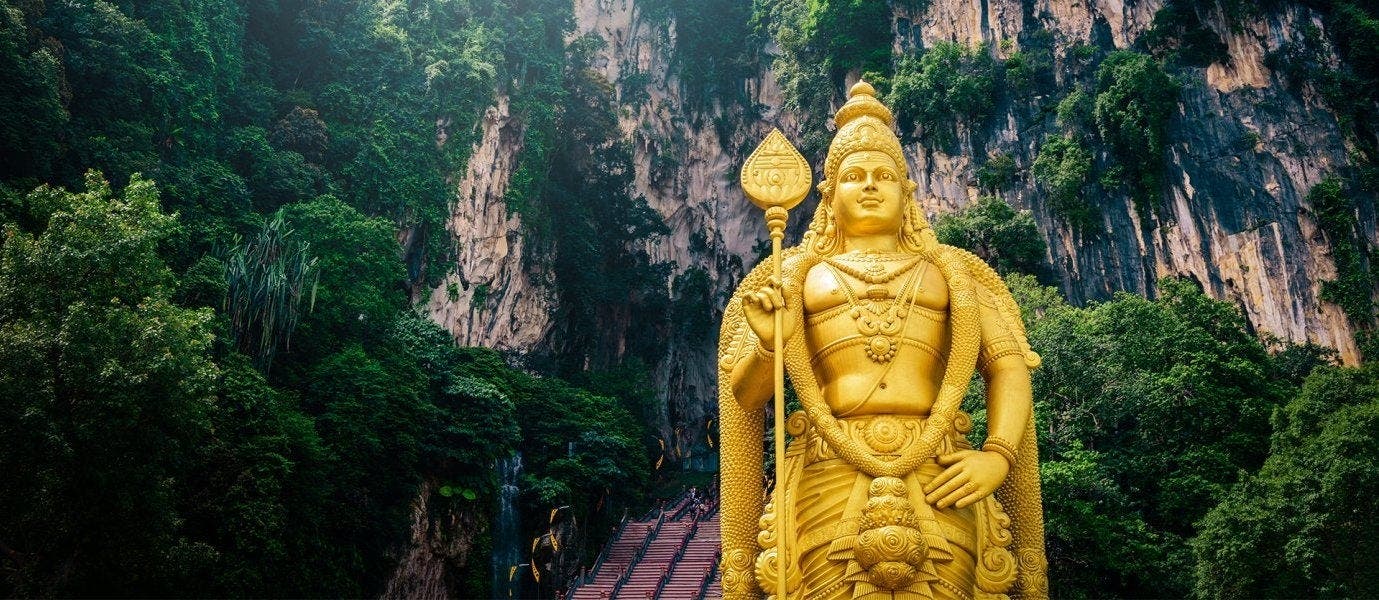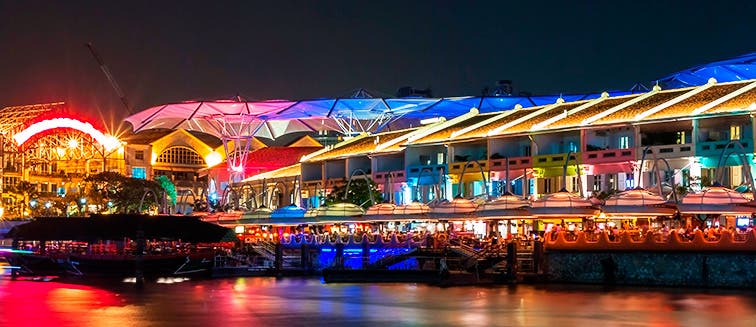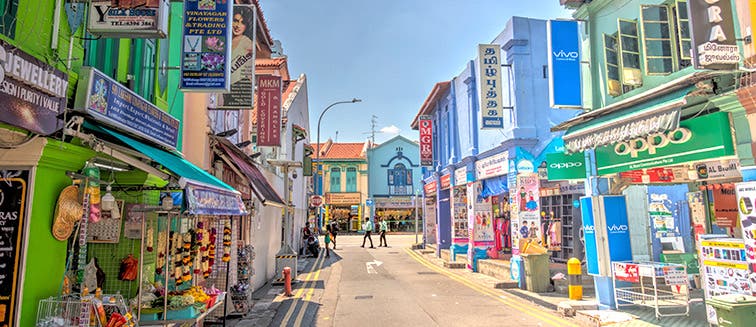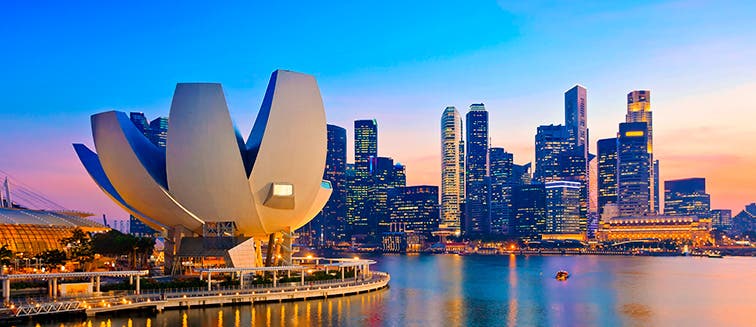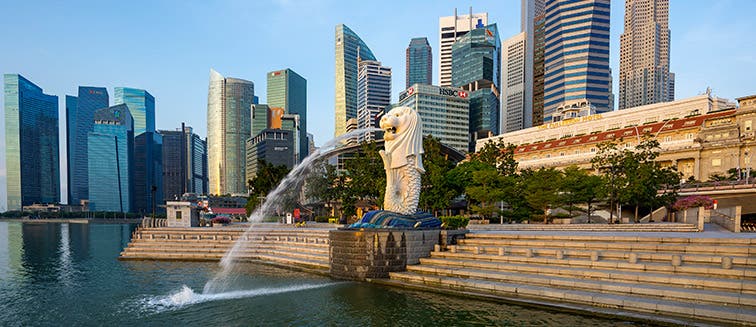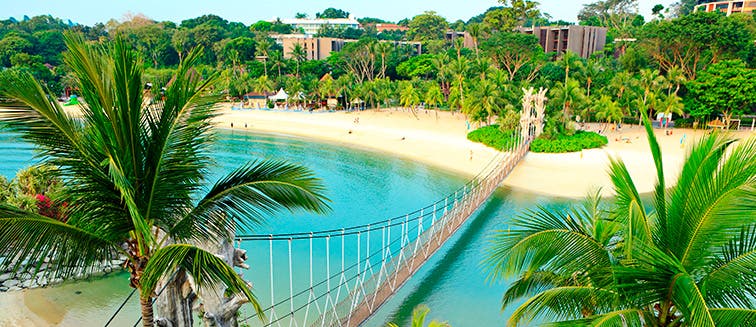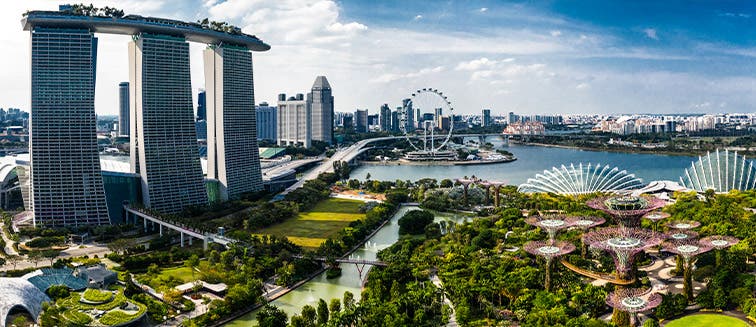A city-state in Southeast Asia, Singapore is a fantastical microcosm of Asia as a whole and a true cultural melting-pot. It’s futuristic, it’s eco-friendly, it’s fast-paced and it’s like nowhere else on earth. With an area of just 719 kilometres-squared, Singapore is an island country, separated from southern Malaysia by the Johor Strait. Well-known as a centre of global finance, Singapore’s wow-inducing skyscrapers are balanced by its dedication to creating a Garden City, where lush botanical gardens and so-called ‘green skyscrapers’ create a unique cityscape.Colourful traditional residences rub shoulder with inconceivably modern architecture and the city’s unbeatably efficient transport system, consisting of both underground and overground railways. Shopping paradises, such as Orchard Street, and glamourous resorts and leisure destinations, such as the iconic Marina Bay Sands, are juxtaposed by the hustle and bustle of Little India and Chinatown, where street hawkers serve up the crème de la crème of Asian cuisine for bargain prices.A city of contrasts, a trip to Singapore would not be complete without heading out of the city centre, where you’re soon reminded of Singapore’s tropical location due to its jungle reserves, idyllic palm-fringed beaches and hilltop walking trails. Travel to Singapore is always a fascinating adventure, whether you’re visiting for the unbeatable shopping, the vibrant culture or the glamorous hotels.
History of Singapore
Such a fascinating nation is sure to have a similarly interesting history. Singapore has been a successful trading centre for many centuries and aside from ancient mentions of ‘an island south of the Malay peninsula’ Singapore did not reach popular knowledge until 1365, when a Javanese poet referred to it as ‘Temasek’, an important trading port with strong links to both Indian and Siamese kingdoms. In 1613, Portuguese raiders destroyed much of the settlements of Temasek, causing the island to fade into obscurity until the 19th-century.Singapore as we know it today came into existence in 1819 when the British governor, Stamford Raffles, made a deal with the Sultanate of Johor to set up a trading port on the island, due to its perfect location on trade routes to the Far East. The island became a major centre of exports and attracted many Chinese and Indian immigrants, whose cultures can still be experienced today on a tour of Singapore if you explore the neighbourhoods of Little India or Chinatown. Singapore was largely unaffected by World War I, but during World War II the island was occupied by the Japanese Imperial Army who had invaded British Malaya. In 1945, British control in Singapore was reinstated following the end of the war, liberating the island from Japan.A decade later, Singapore was granted self-rule and joined the Malaysian Federation in 1963, although only remained part of the union for two years as independence was thrust upon the island state in 1965 when they were expelled from the federation due to the perceived threat of a Chinese majority in Singapore. Since it’s independence, Singapore has experienced an economic boom and today it is classified as an Alpha global city, due to its influence on the global economy.
Nature in Singapore
The total territory of Singapore is composed of 63 islands, the largest of which is the main island of Pulau Ujong, where most holidays to Singapore are focused. Although the urbanisation of Singapore has resulted in the loss of much of its natural forests and jungle ecosystems, there are still a number of fabulous parks and habitats to explore if you travel to Singapore, where you can escape the urban metropolis and get in touch with Singapore’s amazing biodiversity. Conveniently located in the centre of Singapore’s main island, Bukit Timah Nature Reserve is the best place in the country to experience the diverse native wildlife.This biodiverse ecosystem is home to monkeys, reptiles and birdlife and has a number of hiking and mountain biking trails so visitors can explore its tropical landscapes in a way that suits them. Mac Ritchie Reservoir Park is another nature reserve where adventurous travellers can traverse treetop walkways, have a go at various watersports and wander through wildlife trails where you’re likely to bump into some of the local wildlife. If you travel to Singapore as a wildlife lover, you should consider visiting Singapore Zoo, renowned for its ‘open-concept’ rainforest environment and considered one of the best zoos in the world.Home to exotic wildlife ranging from Bornean orangutans to African lions and the famous Proboscis monkeys, it’s a must-see if you visit Singapore. If your idea of a natural paradise involves sand and sea, Singapore has miles of beach to choose from. Palawan Beach, on Sentosa Island, is a gorgeous natural paradise where you can blissfully while away the afternoon basking in Singapore’s year-round tropical temperatures.
Culture in Singapore
There aren’t many places on earth as diverse as Singapore. People of Chinese, Malay and Indian descent make up the largest proportions of the population, giving rise to a rich mix of Asian culture and an equally diverse and delicious food scene, exemplified in the city’s many Hawker Centres. These open-air food courts, popular with all Singaporeans, offer an affordable and tasty insight into the national cuisine and are an unmissable experience on a trip to Singapore if you want to experience authentic Singaporean culture.As one of the world’s most religiously diverse nations, you’ll find mosques, churches and Buddhist temples throughout Singapore, where religious freedom is guaranteed in the constitution. Singapore has four official languages: English, Mandarin, Malay and Tamil, although a unique legacy of British rules has been the emergence of ‘Singlish’, a local tongue and fusion of all of the above languages. Despite Singapore’s liberalism in many areas, it is well-known for its regulations and fines, some of which are against seemingly innocent acts such as chewing gum or smoking. Keeping the city clean is a priority, so keep this in mind if you travel to Singapore.An organised, safe and fun-loving nation, Singapore is an amazing and unreplicable destination. From it’s gravity-defying skyscrapers to its super-modern shopping malls, old colonial neighbourhoods and lush jungle hideaways, a trip to Singapore deserves to be at the top of your travel list.

